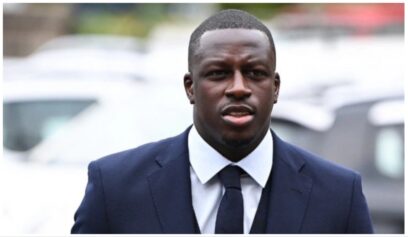The US men’s soccer team got a gem when John Brooks accepted an invite to play in its Aug. 14th friendly against Bosnia and Herzegovina. Brooks is a 20-year-old, 6’4 central defender with talented enough foot skills to play as a midfielder. There are not many players in the world with his abilities, so the fact that he’s representing the United States should have fans celebrating even more than the team’s 4-3 win against the Bosnians.
Brooks isn’t a full-blooded American. In fact, he was born to an African-American serviceman and German mother — giving him dual citizenship — and raised in Berlin. Per FIFA rules, he had the option to play for either country, and after both nations courted him, Brooks decided to roll with the United States over the European juggernaut. As shocking as it may sound for those who don’t follow the national team, this isn’t the first time this has happened, and it definitely won’t be the last.
Watching the US national team on its recent 12-game winning streak under German-born coach Jurgen Klinsmann, there is a mystifying connection between the team’s development and its influx of German-American blood. John Brooks is the newest product coming from the deep pipeline of German-American talent.
That same pipeline also produced versatile left midfielder Fabian Johnson, powerful striker Terrence Boyd, and gritty defensive midfielders Jermaine Jones and Danny Williams. Jones and Johnson will be significant players for the team’s World Cup campaign, while Boyd and Williams are also likely to earn a spot for Brazil 2014.
They are all half-black military brats, raised in Germany and bred through the German soccer system. Surprised? Well, the explanation isn’t so far-fetched. The phenomenon is an offspring of American history, dating back to the Cold War.
The US soccer team reminds us how our race relations differ from other nations. As Jones and Williams explained in their German accent, their skin color makes them feel more comfortable as an American citizen. Germany doesn’t consider race in its census, and the racial homogeneity of the country leads to some skepticism toward non-whites. On the other hand, the same questions don’t exist in the same degree in the United States. Without a doubt, racial tension still exists here, but, as former US U-20 soccer coach Thomas Rongen explained, our country’s diversity fosters a better sense of belonging as a citizen.
“It’s what America is all about,” Rongen said in a 2011 New York Times article. “It’s a melting pot, anyway.”
That doesn’t mean Germany refuses to embrace non-white players on its national team. Many players of African descent have played on Germany before. The most recent example is Ghanaian-German Jerome Boateng, a defender who plays for defending Champions League winners Bayern Munich and is a regular member of the national team. Soccer related factors — where talent will always have the final say — contribute to the decisions of those with mixed heritage.
Depending on the player’s preferences, he may choose to play for a better team or one where he will get more playing time. The German-American players on the US would have a harder time breaking into Germany’s setup, and the opportunity to make an impact for a team that can still make a decent run in the World Cup is a hard one to pass up. These guys are athletes and the pride they have as competitors is, at times, even stronger than their pride as citizens. Either way, they are hungry for respect, especially from their German peers.
Nearly every German-American player (Williams is the only notable exception, who recently joined English second division side Reading) plays their club ball in Germany, with most of them playing in the Bundesliga, the top division of German soccer. The Bundesliga is one of the best leagues in the world, but if they truly scorn their German roots, they can play in England or Spain, where the difference in skill is negligible. There is a feeling of satisfaction that comes with showing up your naysayers, especially when they are the ones who knew you from the start.
For the German-Americans, that feeling had to come when the US beat Germany 4-3 in a friendly in June. Through the success they achieve with their German clubs and with the US national team, they finally gain the recognition they rarely received coming up the German ranks.
At the moment, the German-American players are letting it be known that they have a lot to offer. Along with Klinsmann’s tactical philosophy, they have helped the national team adopt a faster, more technical style. Contrary to how it looks, Klinsmann had no direct involvement in the sudden change in demographics. Still, that coincidence has led to concerns that the national team is losing its identity, which was summarized in a report from The Sporting News in March:
Over the past several weeks, The Sporting News has spoken to 22 individuals with ties to the U.S. national team or its members—including 11 current players based in MLS or abroad. The remaining sources make their living in American soccer and have reliable relationships with players, coaches and executives. Sources were offered in anonymity in exchange for their anecdotes, observations and opinions. Those identified by name are Klinsmann, and three players who spoke shortly before reporting on this story commenced. What emerged over the course of these discussions was near unanimity regarding the players’ flagging faith in Klinsmann, his staff and his methods, along with the squad’s absence of harmony.
In conversation after conversation, the same themes emerged:
Klinsmann and chief assistant Martin Vasquez either lack the tactical acumen and game-day chops to successfully lead the team or fail to communicate their wishes effectively.
Too much time and too many resources are spent on initiatives that don’t translate to the field.
Constant lineup changes and building resentment over the perceived importance and attitude of the German-born players are harming team chemistry.
Such assertions are misguided. The lineup changes are an indicator of a more competitive player pool, which fosters a larger sense of urgency within the team. Wherever the talent comes from, team chemistry is ultimately built between players that make the biggest competitions. Ask the 1998 World Cup winning France team — which featured eight black players and an almost entirely multi-cultural roster — if they lacked team chemistry.
The criticism the United States’ team selection has received is similar to what France has gone through since the ‘90s. Like the black Frenchmen that played in the ’98 World Cup team, the German-Americans on the US national team are representative of America as a soccer-playing nation. Brooks is the newest instance of America’s history-laden influence around the world. As time goes on, he — and the players before and after him — will transform the US national team into one that can make just as big of an impact in the soccer world.



